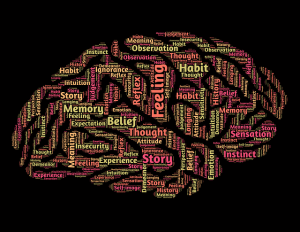 “I have absolutely no pleasure in the stimulants in which I sometimes so madly indulge. It has not been in the pursuit of pleasure that I have periled life and reputation and reason. It has been the desperate attempt to escape from torturing memories, from a sense of insupportable loneliness and a dread of some strange impending doom.”- Edgar Allan Poe [1]
“I have absolutely no pleasure in the stimulants in which I sometimes so madly indulge. It has not been in the pursuit of pleasure that I have periled life and reputation and reason. It has been the desperate attempt to escape from torturing memories, from a sense of insupportable loneliness and a dread of some strange impending doom.”- Edgar Allan Poe [1]
The experience of trauma is everywhere in America, 75% of Americans have experienced a traumatic event and 6.7% of those individuals have had posttraumatic stress disorder (PTSD) in their lifetime [2].
It is difficult to deal with trauma. A single event such as a car accident or surgery is difficult to work through, but long-standing childhood trauma tends to be more problematic. Children who experience trauma with caregivers continue to come into contact with the very people that are supposed to provide safety and this leaves them in a constant state of fear.
This constant state of fear is one of the major ingredients for the development of PTSD [3,4]. Research shows that traumatic events during childhood have been connected with issues later in life [5] such as PTSD, major depressive disorder [6,7] and alcohol use disorder [8,9].
People Are Often Unaware of the Effect of Trauma
The relationship between substance use disorders and PTSD is well established [10, 11] but often people with substance abuse issues are unaware of related trauma. Research supports that unaddressed PTSD or trauma is a factor for relapse with substance use disorders [12] though getting to the core of these traumatic memories is difficult.
Talk therapy and 12-step groups can be helpful in treating addiction, but often individuals that have worked their program find themselves in relapse blaming themselves for not being good enough to stick with their recovery.
Good news is that there is hope for trauma treatment as it relates to alcohol, drug use and relapse, with treatments such as Somatic Experiencing, EMDR and expressive arts therapy.
The Role of Somatic Experiencing to Deal with Trauma
 One therapy used for healing trauma is Somatic Experiencing based on work by Peter Levine [13] who has studied animals and how they process through traumatic events in nature. Animals in the wild are able to literally shake off a traumatic event and return to a state of regulation.
One therapy used for healing trauma is Somatic Experiencing based on work by Peter Levine [13] who has studied animals and how they process through traumatic events in nature. Animals in the wild are able to literally shake off a traumatic event and return to a state of regulation.
Continuing to Live in the Past
Unlike most animals, human beings have difficulty returning to a state of regulation because we think deeply about the event in the newest part of the brain the neo-cortex. This thinking actually blocks the older parts of the brain from processing through the event.
In other words, we continue to live in the past, replaying what happened and planning how to avoid potential threats in the future.
Finding "Regulation" in Drugs or Alcohol
With this constant focus on past and future we lose our ability to live in the present moment. At the same time our nervous system wants to return to a state of regulation and we find ways such as using alcohol and drugs to induce what feels like a regulated state.
Somatic Experiencing allows individuals to experience their body in the here and now so they can release trauma and return to a state of being curious, open and connected with others without drinking or using substances.
Eye Movement Desensitization and Reprocessing (EMDR) to Deal with Trauma
Another therapy that has been researched and validated for the treatment of PTSD is Eye Movement Desensitization and Reprocessing (EMDR) [14, 15]. In this therapy both sides of the brain are stimulated back and forth through eye movements, touch and/or sound while an individual focuses on a traumatic memory.
This stimulation of both sides of the brain while focusing on a memory allows the individual to safely process through the memory so it gets resolved. After completing EMDR many individuals state that they remember what happened but that it is no longer disturbing.
EMDR has been used successfully with substance use disorder [12, 16, 17, 18] and can also help an individual with negative beliefs they learned about themselves through trauma. This in turn may assist with confidence in future situations such as preventing relapse.
Art Therapy to Deal with Trauma
 Art therapy has also been used for treating trauma and addiction. People record life experiences both as a story and through the five senses [19]. Art is a natural all sensory mode of expression because it involves touch, smell, and other senses within the experience of creating artwork.
Art therapy has also been used for treating trauma and addiction. People record life experiences both as a story and through the five senses [19]. Art is a natural all sensory mode of expression because it involves touch, smell, and other senses within the experience of creating artwork.
Traumatic memories are often difficult to share and art is a gentle way to recall memories that are too terrifying to speak about.
Additionally, using expressive arts interventions to work with somatic symptoms and somatic therapies may help a client move from patterns of being stuck in the symptoms of trauma to completion of these cycles.
The Validation of Addiction Therapy
It is an exciting time in the treatment to deal with trauma and addiction and trauma as new therapies are being discovered and older therapies are being validated. As technology increases we are able to look at the brain and understand the causes and effects of addictive behaviors and traumatic events.
As the field of psychology and counseling matures, and this research unfolds, we have better ways to normalize addiction and trauma rather than label and criticize those struggling with these issues. This research and understanding is helping to give hope where once there was blame and shame.
References:
- Poe, Edgar, A.. Edgar Allan Poe Quotes. Retrieved from http://www.goodreads.com/quotes/11589-i-have-absolutely-no-pleasure-in-the-stimulants-in-which
- Sledjeski, E. M., Speisman, B., & Dierker, L. B. (2008). Does number of lifetime traumas explain the relationship between PTSD and chronic medical conditions? Answers from the National Comorbidity Survey- Replication (NCS-R). Journal of Behavioral Medicine, 31, 341–349.
- Shalev AY. Acute stress reactions in adults. Biol Psychiatry 2002;51:532–43.
- PTSD Alliance. Posttraumatic stress disorder: a guide for the frontline. [Internet resource]: PTSD Alliance; 2000. Available at: http://www.PTSDAlliance.org (accessed February 2007).
- Kessler RC, Davis CG, Kendler KS. Childhood adversity and adult psychiatric disorder in the US National Comorbidity Survey. Psychol Med 1997;27:1101–19.
- Nelson EC, Heath AC, Madden PAF, et al. Association between self-reported childhood sexual abuse and adverse psychosocial outcomes. Arch Gen Psychiatry 2002;59:139–45.
- Duncan RD, Saunders BE, Kilpatrick DG, Hanson RF, Resnick HS. Childhood physical assault as a risk factor for PTSD, depression, and substance abuse: findings from a national survey. Am J Orthopsychiatry 1996;66:437–48.
- Langeland W, Draijer N, van den Brink W. Psychiatric comorbidity in treatment-seeking alcoholics: the role of childhood trauma and perceived parental dysfunction. Alcohol Clin Exp Res 2004;38:441–7.
- Hepp U, Gamma A, Milos G, et al. Prevalence of exposure to potentially traumatic events and PTSD: the Zurich Cohort Study. Eur Arch Psychiatry ClinNeurosci 2006; 256:151–8.
- Najavits, L. M., Weiss, R. D., & Shaw, S. R. (1997). The link between substance abuse and posttraumatic stress disorder in women: A review. The American Journal on Addictions, 1997, 273–283.
- Ouimette, P., & Brown, P. J. (2002). Trauma and substance abuse: Causes, consequences, and treatment of comorbid disorders. Washington, DC: American Psychological Association.
- Zweben, J., & Yeary, J. (2006). EMDR in the treatment of addiction.
Journal of Chemical Dependency Treatment, 8(2), 115–127. - Levine, P.A. (1997). Waking the Tiger: Healing Trauma. Berkley, CA: North Atlantic Books
- Ironson, G. I., Freund, B., Strauss, J. L., & Williams, J. (2002). Comparison of two treatments for traumatic stress: A community-based study of EMDR and prolonged exposure. Journal of Clinical Psychology, 58,1071–1089.
- Maxfield, L., & Hyer, L. (2002). The relationship between efficacy and methodology in studies investigating EMDR treatment of PTSD. Journal of Clinical Psychology, 58, 23–41.
- Brown, S. (2003). The missing piece: The case for EMDR-based treatment for posttraumatic stress disorder and co-occurring substance use disorder.
- Shapiro, F., & Forrest, M. (1997). EMDR: The breakthrough “eye movement” therapy for overcoming stress, anxiety, and trauma. New York, NY: Basic Books.
- Shapiro, F., Vogelmann-Sine, S., & Sine, L. (1994). Eye movement desensitization and reprocessing: Treating trauma and substance abuse.
- Malchoidi, C.A. (Ed.) & Rozum, A.L. (2011). Handbook of Art Therapy. New York, NY: Guilford Press.
Contributed by:
Sandra Lehmann, MC, LPC, CEAT, a Trauma Resolution Counselor at The Meadows, which is an inpatient mental health facility specializing in addiction and trauma.
Last Updated & Reviewed By: Jacquelyn Ekern, MS, LPC on January 7th, 2015
Published on AddictionHope.com
